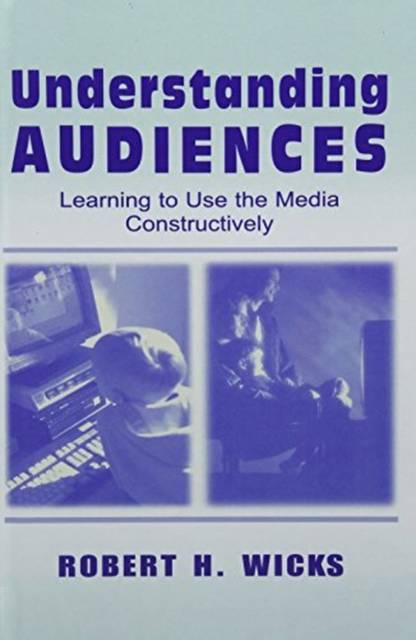
- Afhalen na 1 uur in een winkel met voorraad
- Gratis thuislevering in België vanaf € 30
- Ruim aanbod met 7 miljoen producten
- Afhalen na 1 uur in een winkel met voorraad
- Gratis thuislevering in België vanaf € 30
- Ruim aanbod met 7 miljoen producten
Zoeken
€ 256,95
+ 513 punten
Omschrijving
Understanding Audiences helps readers to recognize the important role that media plays in their lives and suggests ways in which they may use media constructively. Author Robert H. Wicks considers the relationship between the producers and the receivers of media information, focusing on how messages shape perceptions of social reality. He analyzes how contemporary media--including newspapers, film, television, and the Internet--vie for the attention of the audience members, and evaluates the importance of message structure and content in attracting and maintaining the attention of audiences. Wicks also examines the principles associated with persuasive communication and the ways in which professional communicators frame messages to help audiences construct meaning about the world around them. Among other features, this text: describes the processes associated with human information processing; presents an analysis of the principles associated with social learning in children and adults and explores the possibility that media messages may cultivate ideas, attitudes, and criticisms of this perspective; explains how most media messages are framed to highlight or accentuate specific perspectives of individuals or organizations--challenging the notion of objectivity in media information messages; considers the effects of media exposure, such as whether the contemporary media environment may be partially responsible for the recent rash of school violence among young people; analyzes the Internet as an interactive medium and considers whether it has the potential to contribute to social and civic disengagement as it substitutes for human interaction; and evaluates the principles of the uses and gratifications approach as they apply to the new media environment, including traditional media as well as popular genres like talk shows and developing media systems such as the Internet. Intended for upper-level under
Specificaties
Betrokkenen
- Auteur(s):
- Uitgeverij:
Inhoud
- Aantal bladzijden:
- 264
- Taal:
- Engels
- Reeks:
Eigenschappen
- Productcode (EAN):
- 9781138463264
- Verschijningsdatum:
- 21/08/2017
- Uitvoering:
- Hardcover
- Formaat:
- Genaaid
- Afmetingen:
- 152 mm x 229 mm
- Gewicht:
- 452 g

Alleen bij Standaard Boekhandel
+ 513 punten op je klantenkaart van Standaard Boekhandel
Beoordelingen
We publiceren alleen reviews die voldoen aan de voorwaarden voor reviews. Bekijk onze voorwaarden voor reviews.











